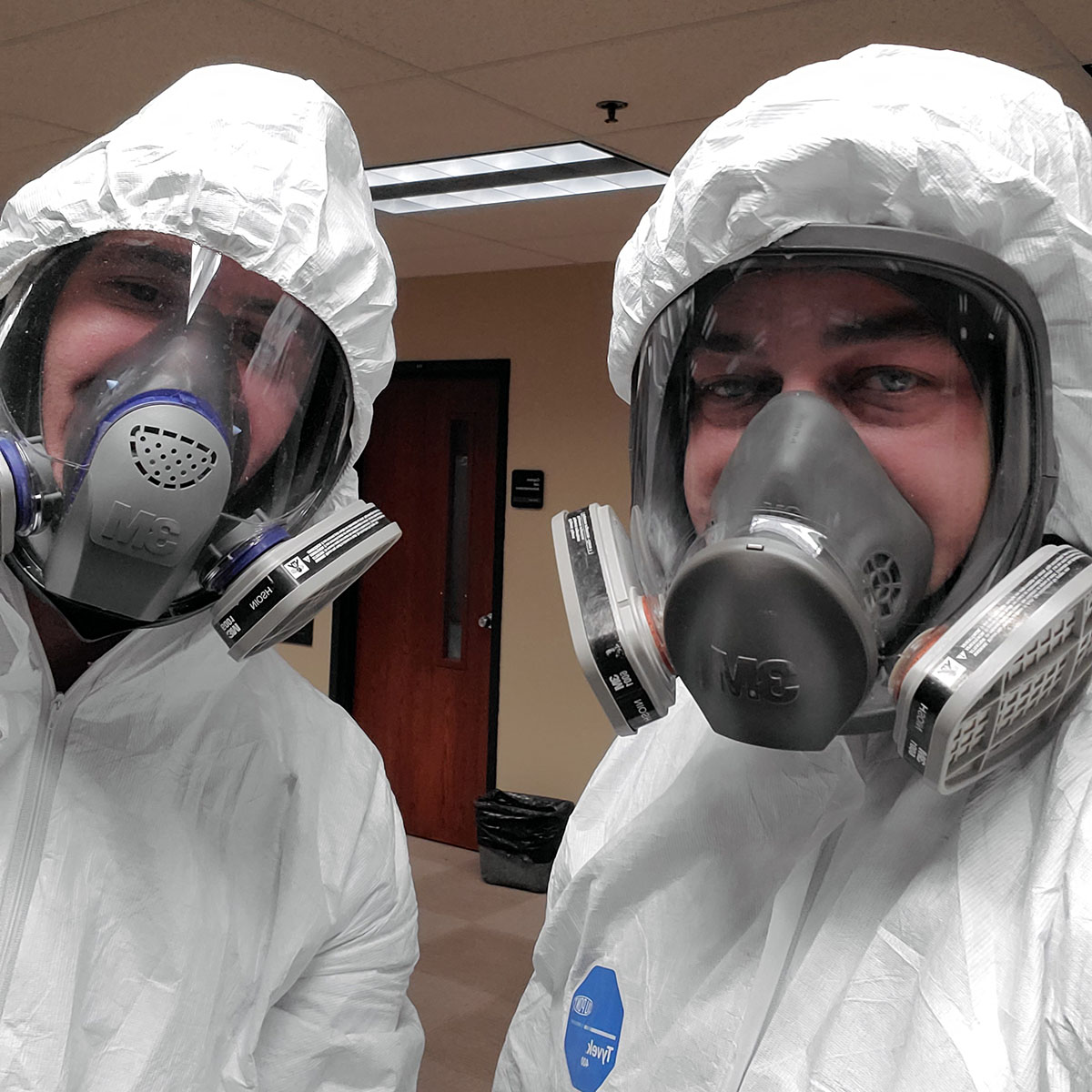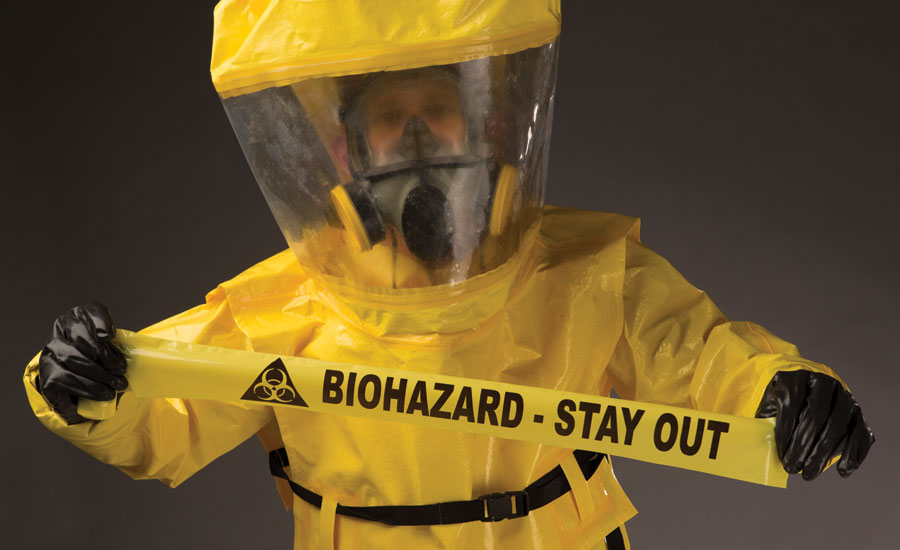Expert Biohazard Cleansing and Purification for Blood, Bodily Fluids, and Hazardous Materials
The possible health risks associated with direct exposure to biohazards highlight the important requirement for careful handling and detailed cleaning. As we navigate the intricate landscape of biohazard cleaning, recognizing the nuances of policies, compliance, and the specialized tools at play ends up being critical in making certain a extensive and secure decontamination process.
Health And Wellness Threats of Biohazard Direct Exposure
Exposure to biohazards postures considerable wellness threats that can cause extreme effects for people and communities alike. Biohazards include a vast array of organic compounds, consisting of blood, physical fluids, mold and mildew, microorganisms, infections, and other potentially transmittable products. When individuals enter call with these biohazards, whether through mishaps, improper handling, or ecological direct exposure, they deal with the threat of contracting significant health problems or diseases.
Among the primary health risks linked with biohazard direct exposure is the transmission of infectious diseases. Bloodborne microorganisms such as HIV, hepatitis B and C, and numerous germs can be present in biohazardous materials, posing a straight hazard to human wellness. Inhaling air-borne biohazards like mold spores or entering into contact with contaminated surfaces can also lead to respiratory system issues, allergies, and other damaging health and wellness effects.
Furthermore, biohazard exposure can have long-term health and wellness implications, with some diseases materializing years after the initial call (Blood Cleanup). As a result, it is important to focus on appropriate biohazard cleansing and decontamination to reduce these health and wellness threats and ensure the safety of individuals and communities

Specialized Training for Biohazard Clean-up
When it involves handling biohazard cleaning successfully and securely, specialized training plays a basic role in making sure correct purification treatments are complied with. Biohazard cleanup requires particular expertise and abilities to efficiently mitigate threats related to bloodborne pathogens, physical liquids, and dangerous materials. Experts learnt biohazard cleanup undergo extensive guideline on how to safely handle, eliminate, and get rid of biohazardous materials to avoid contamination and direct exposure.
Specialized training for biohazard cleanup covers a variety of vital subjects, consisting of proper personal protective tools (PPE) use, bloodborne pathogen recognition, purification techniques, and dangerous waste disposal protocols. People trained in biohazard cleanup are geared up with the required knowledge to assess contamination degrees, identify possible dangers, and execute suitable cleanup treatments in compliance with regulatory criteria.
Continuous training and education are vital in the area of biohazard clean-up to stay upgraded on the most recent decontamination technologies, security methods, and regulations. By purchasing specialized training, biohazard cleaning specialists can properly react to emergency cleaning situations and secure both public wellness and the setting.
Relevance of Proper Decontamination Methods
Using proper decontamination strategies is essential in biohazard clean-up to efficiently lessen and get rid of dangerous products health and wellness threats. Efficient purification not just makes certain the removal of visible traces of blood, bodily liquids, and various other biohazards however likewise targets unnoticeable microorganisms that may position severe health and wellness threats otherwise effectively eliminated. By adhering to strict purification protocols, educated experts can considerably minimize the threat of direct exposure to hazardous bacteria, viruses, and bacteria that could cause diseases or infections.
Correct purification techniques involve the cleaning up biohazard spill use of customized devices and disinfectants that are especially developed to counteract biohazards efficiently. Comprehensive cleansing and sanitation of contaminated locations are vital to avoid the spread of virus and ensure a secure environment for residents. In addition, the correct disposal of biohazardous waste following purification procedures is crucial in avoiding contamination of various other surfaces or individuals.

Equipment and Tools for Safe Cleanup
The appropriate equipment and tools play a vital function in making certain the safe and reliable cleanup of biohazardous products. When managing blood, bodily liquids, or harmful products, biohazard cleaning professionals depend on specialized gear to lessen direct exposure risks and extensively decontaminate the affected location. Individual protective tools (PPE) such as handwear covers, coveralls, safety glasses, and masks are vital to protect against straight call with possibly transmittable materials. Furthermore, biohazard cleansing sets containing disinfectants, absorptive products, and biohazard bags are made use of to securely dispose and have of polluted products. Blood Cleanup.
Advanced cleansing tools like hospital-grade anti-bacterials, HEPA-filtered recommended you read vacuums, and misting makers are utilized to disinfect surface areas and eliminate biohazards effectively. Specialized devices such as sharps containers and biohazard garbage disposal containers are utilized to securely take care of sharp items and biohazardous waste products. By using the best tools and devices, biohazard cleansing specialists can guarantee a comprehensive clean-up process that focuses on safety and security and lessens health and wellness risks for both workers and owners of the afflicted space.
Laws and Conformity in Biohazard Cleansing
Correct adherence to guidelines and conformity requirements is vital in biohazard cleansing to guarantee the security of both workers and the atmosphere. Government agencies such as OSHA (Occupational Security and Health Management) and the EPA (Epa) have developed details standards for biohazard cleanup treatments to lessen wellness risks and environmental contamination. These laws cover a series of facets consisting of the handling, transportation, and disposal of biohazardous products, as well as the necessary training and protective tools needed for employees associated with the cleaning process.
Biohazard cleansing companies need to stay current with these policies to guarantee that their operations meet the required safety criteria. Failing to abide with these regulations can cause extreme consequences, including penalties, lawsuit, and endangering the wellness of individuals and the setting. By adhering to strict guidelines and compliance steps, biohazard cleaning companies can successfully minimize dangers and guarantee a thorough and secure clean-up process for all events involved.
Conclusion
Finally, biohazard cleaning and purification call for specialized training, correct methods, and adherence to policies. Direct exposure to blood, bodily liquids, and hazardous products postures considerable health threats, making it critical to utilize the ideal devices and tools for safe clean-up. By complying with stringent procedures and standards, specialists can effectively alleviate the threats connected with biohazard direct exposure and make certain the safety and security of both themselves and others.
As we browse the complex landscape of biohazard cleaning, recognizing the nuances of regulations, conformity, additional info and the customized tools at play comes to be important in ensuring a safe and detailed purification procedure. (Blood Cleanup)
When it comes to taking care of biohazard cleaning efficiently and safely, specialized training plays an essential function in making certain proper purification treatments are complied with.Utilizing correct decontamination methods is critical in biohazard clean-up to efficiently reduce and remove hazardous products health risks. Furthermore, biohazard cleaning packages consisting of disinfectants, absorbing materials, and biohazard bags are utilized to safely contain and dispose of polluted products.
Government firms such as OSHA (Occupational Security and Wellness Management) and the EPA (Environmental Security Company) have developed particular guidelines for biohazard clean-up treatments to lessen health risks and ecological contamination.